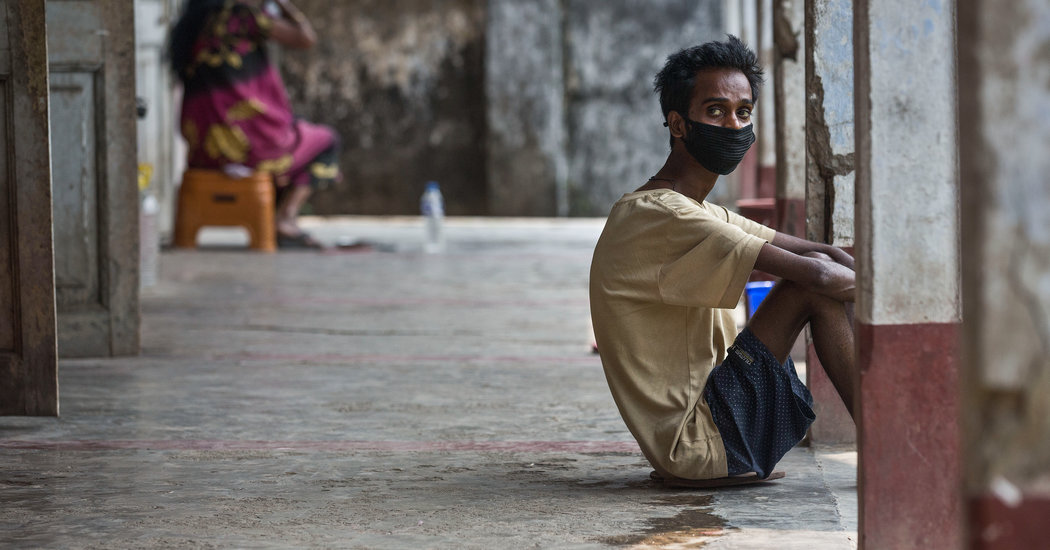
Although experts frequently assert that nearly 1.7 billion people carry dormant tuberculosis worldwide, that figure may be a “gross exaggeration” of the real threat, a recent study concludes.
The study, published last month in the journal BMJ, found that nearly everyone who falls seriously ill with TB does so within two years of getting infected. So-called latent infections only rarely become active, even in old age.
Researchers “have spent hundreds of millions of dollars chasing after latency, but the whole idea that a quarter of the world is infected with TB is based on a fundamental misunderstanding,” said Dr. Lalita Ramakrishnan, a tuberculosis expert at the University of Cambridge and one of the study’s authors.
The challenge to conventional wisdom comes at an opportune time. On Sept. 18, the World Health Organization issued its annual TB report, and on Sept. 26, the United Nations General Assembly will hold its first high-level meeting on the disease.
No one questions how great a threat active tuberculosis is. Around the world, the disease kills more than 4,000 people a day; in 2015, tuberculosis surpassed AIDS as a cause of death.
(TB has not become more lethal, nor AIDS less so. The difference is that 20 million people, mostly in Africa, are now on H.I.V.-suppressing drugs.)
Although the incidence of TB is falling slowly around the world, some regions fare much worse than others. For example, South Africa, Mozambique and the Philippines have especially high infection rates.
Drug-resistant TB remains a crisis, the W.H.O. reported, and just three countries — India, China and Russia — account for almost half the cases.
And the “global treatment success rate” is dropping. The figure was 82 percent in 2016, down from 86 percent three years earlier.
Success in treating drug-resistant forms is even lower, at 55 percent, although some relatively poor countries, like Bangladesh, Ethiopia, Kazakhstan, Myanmar and Vietnam, do better than average.
The BMJ study was accompanied by an editorial endorsing its conclusions, written by Dr. Soumya Swaminathan, a tuberculosis expert and deputy director-general of the W.H.O. She argued that experts should focus on the 55 million people at highest risk of active infection: young children with infected relatives, the severely malnourished, and people with H.I.V. or other immunosuppressive conditions.
Experts at nonprofits like the TB Alliance and the International Union Against Tuberculosis and Lung Disease agreed with the major conclusions of the new study and the need to focus on active rather than latent disease.
But finding tests to tell which carriers of latent infections are most likely to fall ill is still crucial, said Dr. Daniel E. Everitt, the alliance’s senior medical officer.
Dr. Ramakrishnan’s study analyzed reports of local TB outbreaks going back to the 1930s, before antibiotics were invented, in places like the Faroe Islands that were so sparsely populated that it was possible to pinpoint exactly who infected whom and when.
Reports on outbreaks as recent as three years ago in the Netherlands and Canada similarly showed that the vast majority of active cases came from recent infections, not latent infections that became active.
The misconception that 1.7 billion people are walking time bombs, potentially capable of developing and communicating full-blown TB, comes from the fact that skin and blood tests for the bacterium confirm only that the body once mounted an immune reaction to exposure.
The tests do not tell if the bacteria are still alive in the body, said Dr. Paul H. Edelstein, an infectious disease specialist at the University of Pennsylvania and a co-author of the new study.
[Like the Science Times page on Facebook. | Sign up for the Science Times newsletter.]
Who succumbs is probably determined in part by genetic makeup, said Dr. Ramakrishnan, who studies the genetics of TB in zebrafish. She cited the “Lübeck disaster,” a famous incident in the history of vaccines.
In 1929, 250 German infants were given a TB vaccine that was accidentally contaminated with live bacteria. About a third died, and another third fell seriously ill — but a third survived unscathed, possibly because they had innate resistance.
At next week’s U.N. meeting, member states are expected to pledge to increase efforts to treat the infected and to do more research. The organization has estimated that an additional $3.5 billion a year is needed for tuberculosis treatment, along with over $1.3 billion more for research.
In August, the W.H.O. issued new treatment guidelines for drug-resistant TB that rely on newer oral drugs like bedaquiline and delamanid, rather than older injectables with harsh side effects.
But newer drugs are expensive, and months of tense behind-the-scenes negotiations preceded the high-level meeting, according to the Intellectual Property Watch website. The debate pitted South Africa and the medical charity Doctors Without Borders against the United States delegation, which was defending the interests of pharmaceutical companies.
The South Africans and the charity wanted the meeting’s declaration to acknowledge that, under international treaties going back to 1994, poor countries may override patents and import generic drugs when they cannot afford prices that pharmaceutical companies charge.
The final language did not spell that out, but cited the treaties and said intellectual property rights should be interpreted to “promote access to medicines for all.”

